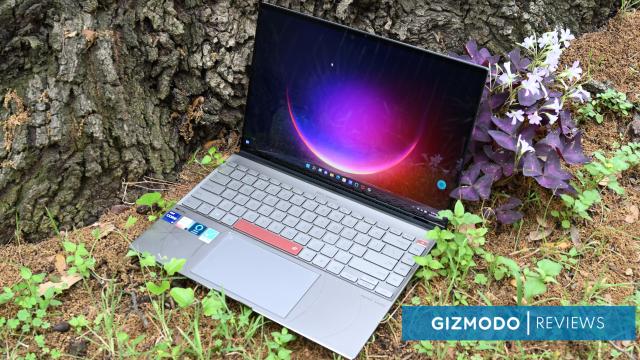Special edition laptops rarely leave a lasting impression. Most add a new colour scheme to an existing chassis or slap some hideous promo branding on the lid to entice fans of a popular movie franchise. Asus’ Zenbook 14X OLED Space Edition isn’t one of those half-assed entries. In the 14X OLED, the Taiwanese laptop maker crafted an authentic notebook filled with fun Easter eggs space lovers will geek out over. It also paired that striking design with a stunning OLED display, rocket-fuelled performance, and a generous selection of ports. These traits — minus one major flaw–prove the 14X OLED to be a genuine contender among portable laptops, and not just some marketing gimmick.
It’s clear the Space Edition is important to Asus, which isn’t simply jumping on a trend but commemorating a moment in its history. It turns out that in 1997, Asus sent P6300 and P6100 laptops to orbit on the Soviet Union-built Mir space station, the first modular space station, and the first inhabited long-term research station in space. Asus claims the laptop lasted the entire 600-day mission without any issues, so in remembrance of this feat, the company designed a special space edition version of its flagship portable laptop.
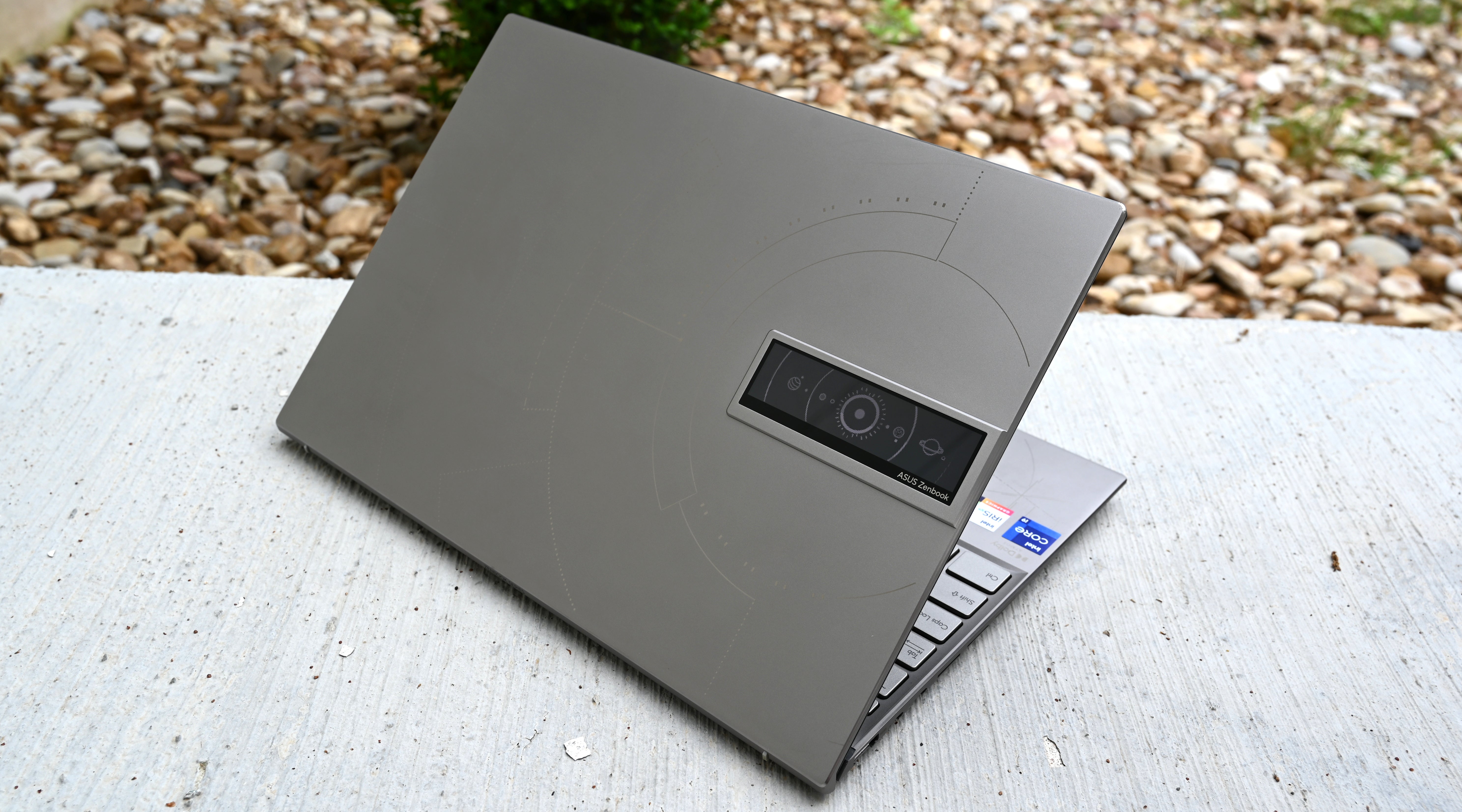
Asus Zenbook 14X OLED Space Edition
What is it?
A space-themed version of Asus' flagship Zenbook portable laptop
Price
$US1,999 (converted to around $2,775)
Pros
Expertly crafted space-themed design, Gorgeous 2.8K OLED display, Speedy Core i9 CPU, The important ports are all here
Cons
Tragic battery life for a portable system, No IR camera, Not cheap
Zenbook 14X OLED Space Edition price and configurations
The 14X OLED Space Edition is currently available in a single $US1,999 (converted to around $2,775) configuration with an Intel Core i9-12900 CPU, 32GB of LPDDR5 RAM, a 1TB SSD, and Iris Xe graphics. It has a 14-inch, 2.8K OLED display.
Morse and Mir
Boy, did Asus lean into this concept. Scattered across the lid and deck of the ZenBook 14X are etchings inspired by the space age. The dots on the lid are morse code for the Latin “ad astra per aspera” (meaning “through hardships to the stars”) while the patterns represent the Mir station and the arced lines symbolise a space capsule. To me, the lid gives off major Star Wars vibes, with the drawings somewhat resembling a TIE fighter.
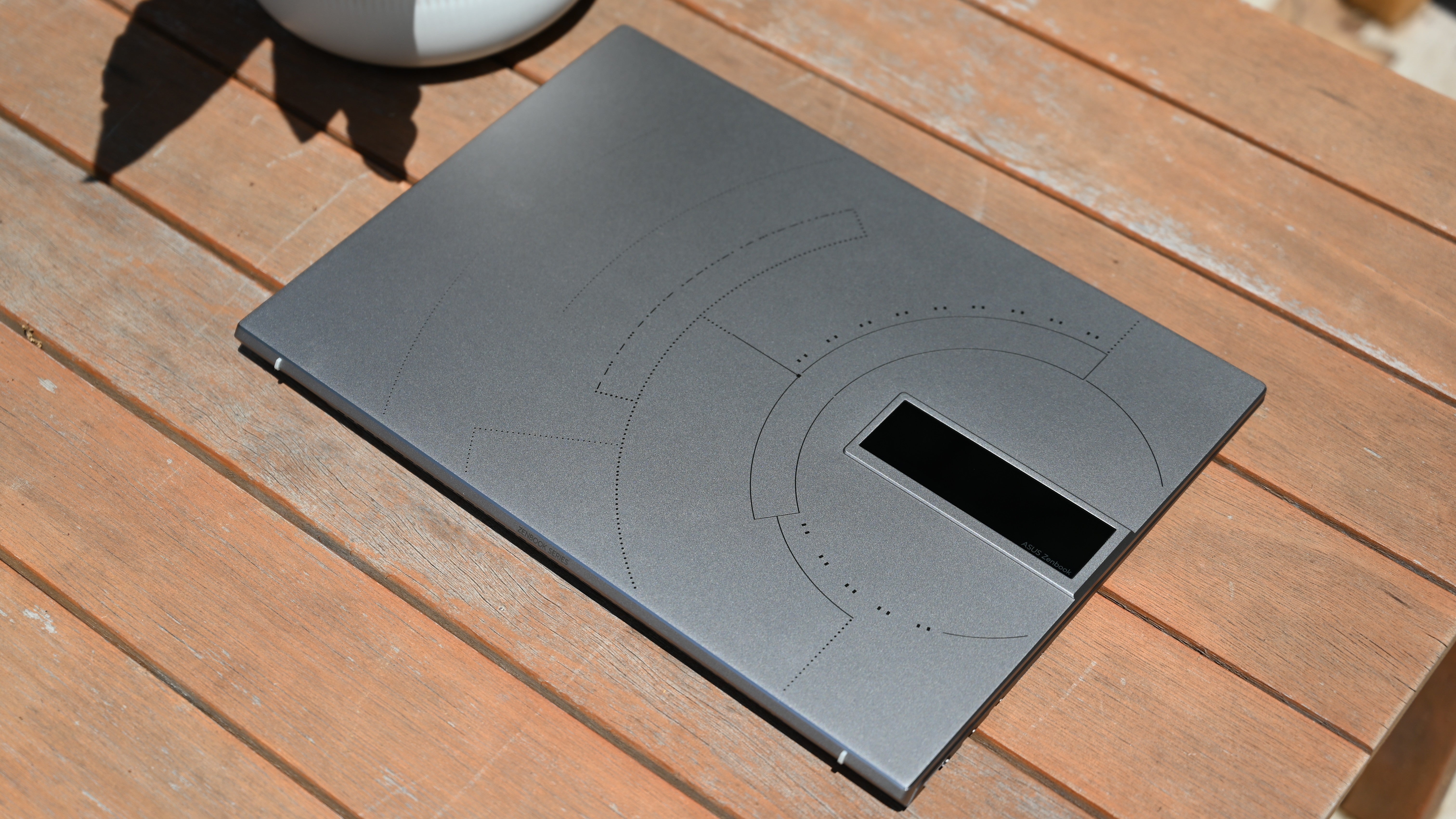
Glass panels seem to be Asus’ new thing, and I’m not complaining. The window on the ROG Flow Z13 revealed a section of the motherboard, illuminated in glorious RGB. On this space-themed lid is a 3.5-inch, 256 x 64 resolution OLED panel that can be customised to show messages, indicators, or animations. You can upload graphics on the panel or cycle a GIF, similar to the dot AniME Matrix on the ROG Zephyrus G14.
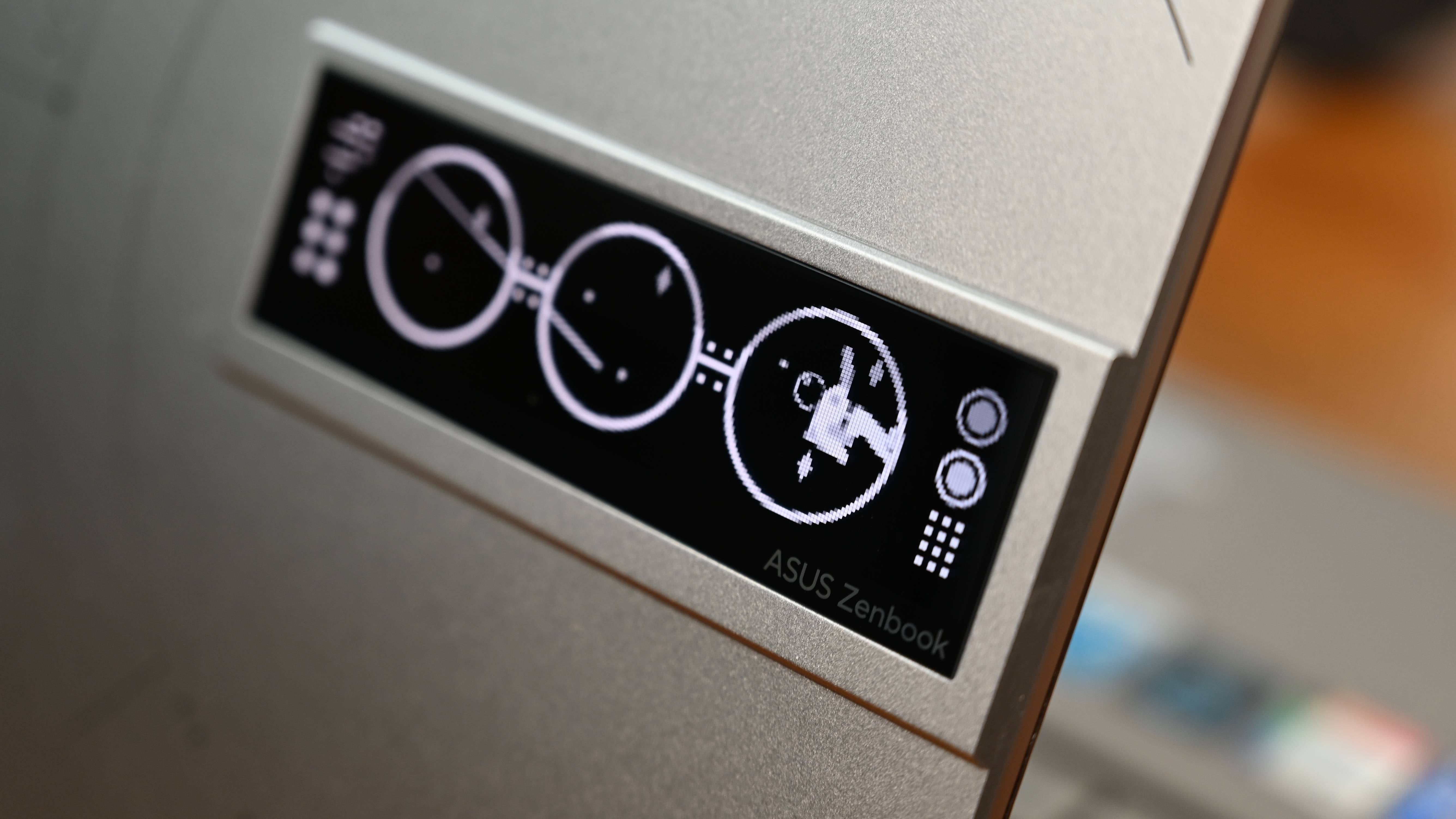
By default, the panel shows an astronaut floating between three connected circles (planets?) with stars in the background next to blinking and flashing symbols. I found other fun options in the customisation section of the MyAsus app. My favourite is an outline of the solar system that shows where each planet lies in relation to the sun, though a close contender is a quick animation of the Mir station being pieced together. As whimsical as these are, I’d probably opt for a more functional animation, like the preset that shows the time, date, and battery life icon when you close the lid. There is also a simple text editor where you can write a custom message (let’s keep it classy, folks).
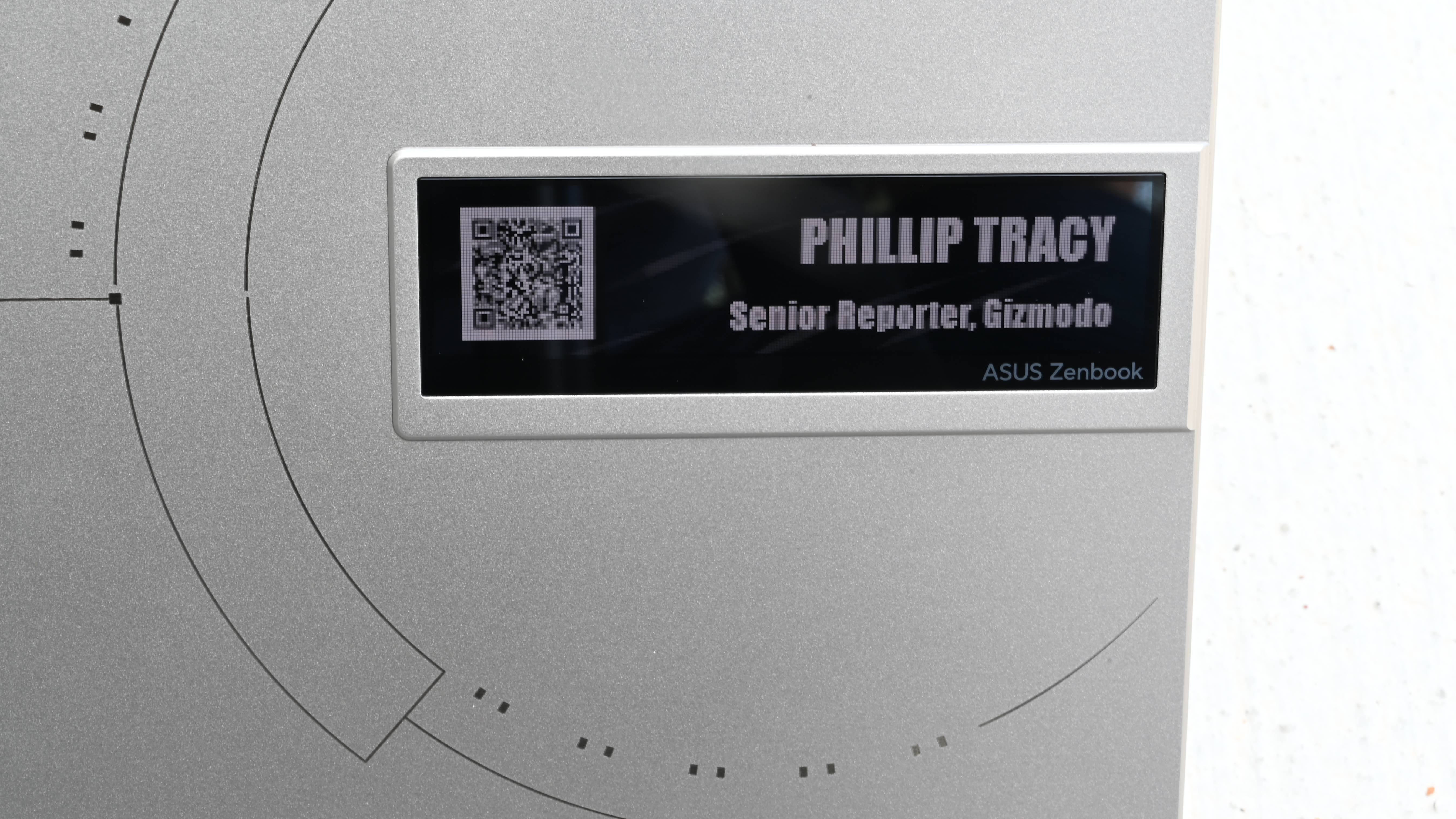
Stray from the space themes and things get real funky. More a party trick than a legitimate job hunting method, the OLED panel can be turned into a business card with a QR code. I submitted my name, title, and website, and the software created a new-age business card that would turn Patrick Bateman into a pacifist. I imagine, and hope, zero people scan the back of my laptop, but even if they tried, the slow refresh rate of the OLED panel makes it almost impossible without manually slowing down your shutter speed (as I did above). And if a digital business card wasn’t strange enough, you can go full custom and upload your own photo. I tested it with a selfie I shot on the webcam and immediately regretted the decision.
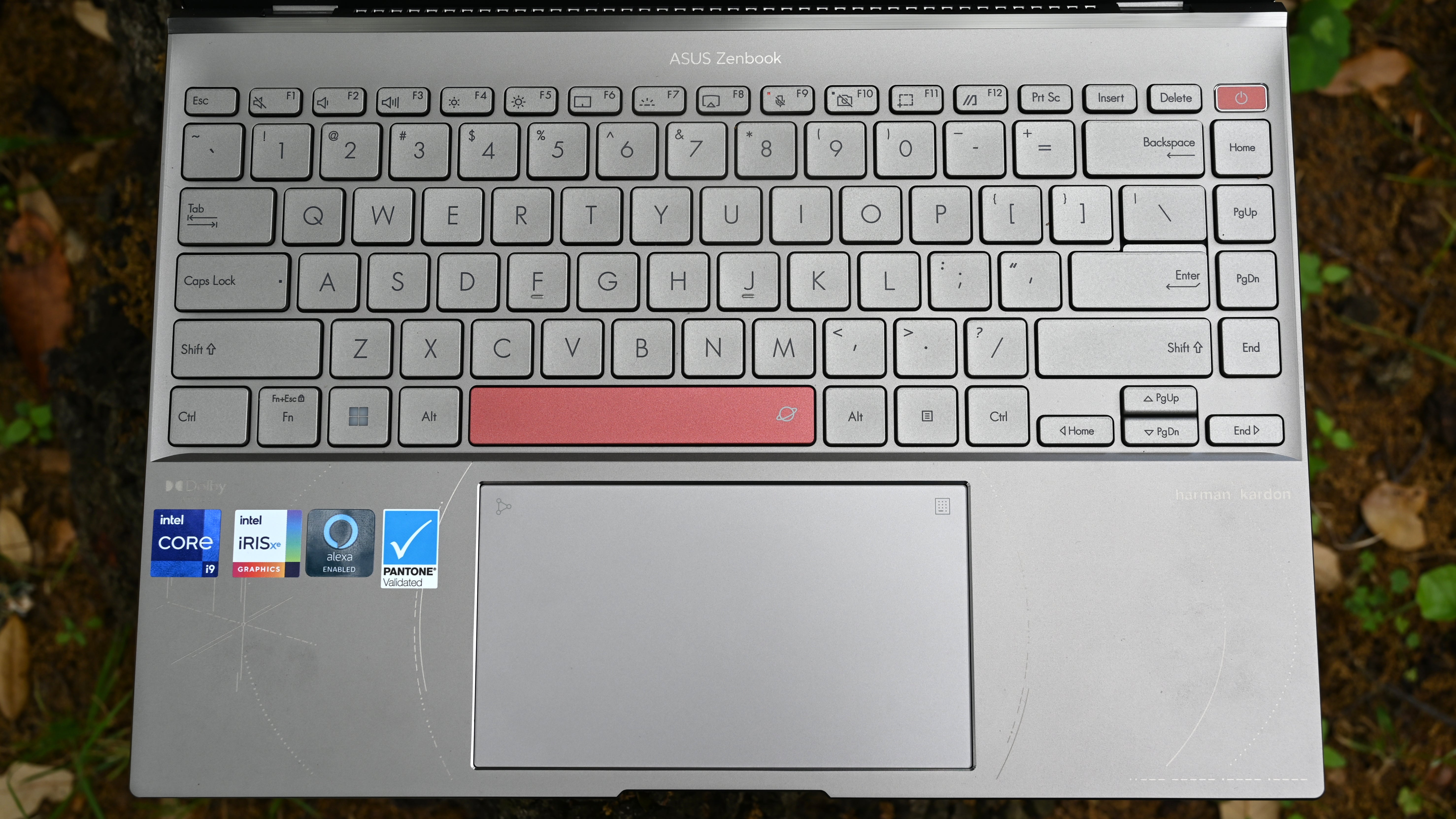
More cosmos-themed design elements continue onto the deck, where space capsule and morse code themes return. To the left of the palm rest is a MIR space station pattern, while two lines on both sides of the touchpad are meant to resemble a cockpit. It’s not for everyone, but as someone growing increasingly bored of understated minimalism, this chassis speaks to me.
Designed for space nerds
But what do I know about space? I’m just the laptop guy. To give you an expert opinion, I Slacked Gizmodo’s resident space experts and asked them what they think of the Zenbook 14X’s chassis.
Here is what they said:
Isaac Schultz, science writer:
“My immediate reaction is that if something is truly a space computer, it should have a glaring red eye and a desire to exterminate humankind. This laptop evidently lacks those features. That said, highlighting the space bar is a nice, punny touch, and I think it is a pretty machine.”
George Dvorsky, senior reporter:
“Space nerds should get a kick out of this laptop, especially while showing it off to their jealous space nerd friends — but they do need to hide the shipping box, which regrettably portrays Pluto as a planet. The coloured spacebar with the Saturn logo is a nice touch, as is the patterned Mir space station. The dynamic, customisable display on the lid is super cool, too.”
“That said, the space-themed design is a bit cryptic, and it might take some explaining. The message in Morse code, a format that’s only very rarely used in space, translates to a latin phrase, which itself needs translation into English. And it’s not completely obvious that the arced lines represent the surface of a space capsule. Still, the laptop looks sleek and futuristic, and certainly something that should appeal to spaceflight junkies.”
Kevin Hurler, breaking news reporter:
“It looks like it was ripped from the pages of a science fiction novel — its awesome. I can’t stop looking at it.”
Passant Rabie, news reporter:
“It feels like it’s perfectly nestled between the past and the future, paying homage to the historic space age while also keeping up with where spaceflight is headed with its futuristic and sleek design.”
So yeah, overall, you’ve done good, Asus. Anyway, ignore the glitz and glam and you have a sleek, lightweight system with a modern design. At 12.24 x 8.7 x 0.6 inches and 1 kg, the Zenbook 14X is portable, nearly matching the size of the Lenovo Yoga 9i (12.5 x 9.1 x 0.6 inches, 1 kg). It also feels well-built, and Asus claims the Zenbook passed not only military-grade tests, but the space-grade vibration and temperature tests used to test if a laptop can operate in a space capsule.

Asus deserves applause for squeezing in as many ports as it did. On the left edge are two Thunderbolt 4 ports for up to 40 Gbps charging, next to an HDMI 2.0 port. On the opposite side is a 3.5mm headphone jack and a USB 3.2 Type-A input. A USB-C-to-Ethernet adaptor comes in the fancy space-themed box, which can be origamied into a laptop stand. How neat! Lastly, a microSD card slot blends into the vent cutouts on the right edge. You also get the latest Wi-Fi 6E and Bluetooth 5.2 support, but no IR camera.
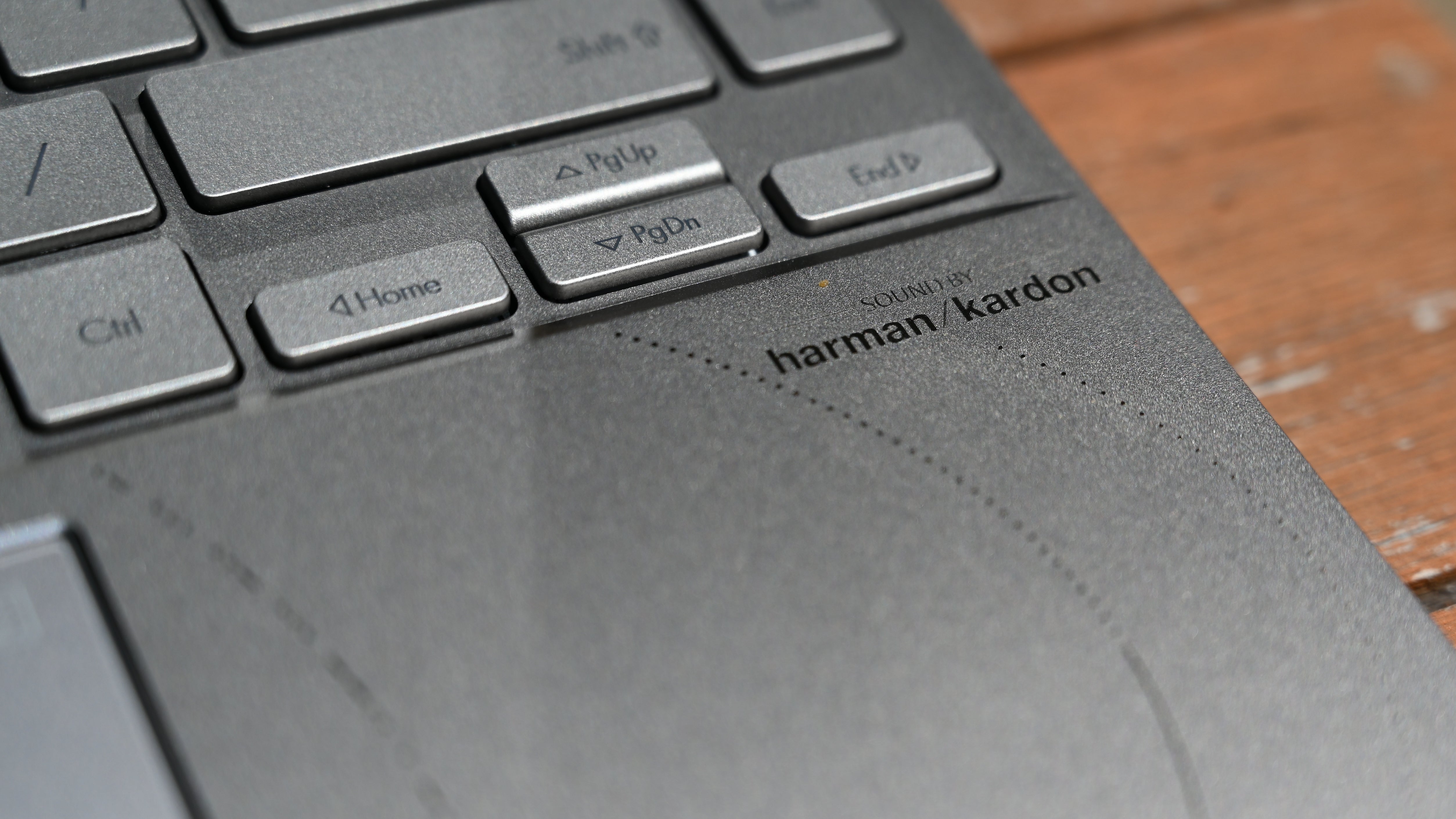
The Harmon Kardon-tuned dual bottom-firing speakers sound good. There was a surprisingly meaty thud to the bass notes in half alive’s “still feel.” and Glass Animals’ “Heat Waves,” while the treble and midrange were crisp. Not every genre or song sounded great; more treble-heavy tunes can get piercing at louder volumes, as I discovered listening to Yahritza Y Su Esencia’s “Soy El Unico,” and Jessie Reyez’s “Apple Juice.” You can get room-filling sound out of these, but they’re best in the 50-70% range.
Traditional keyboard, space-age touchpad
I like the keyboard’s looks more than how it feels. Immediately grabbing my attention was a dusty red (Mars inspired?) power button (and fingerprint sensor) and spacebar, the latter of which has a cute little planet logo on the right side while the former is trimmed in chrome. The other keys match the deck’s “Zero-G Titanium” colour, a sort of grayish silver with hints of brown, depending on the lighting.
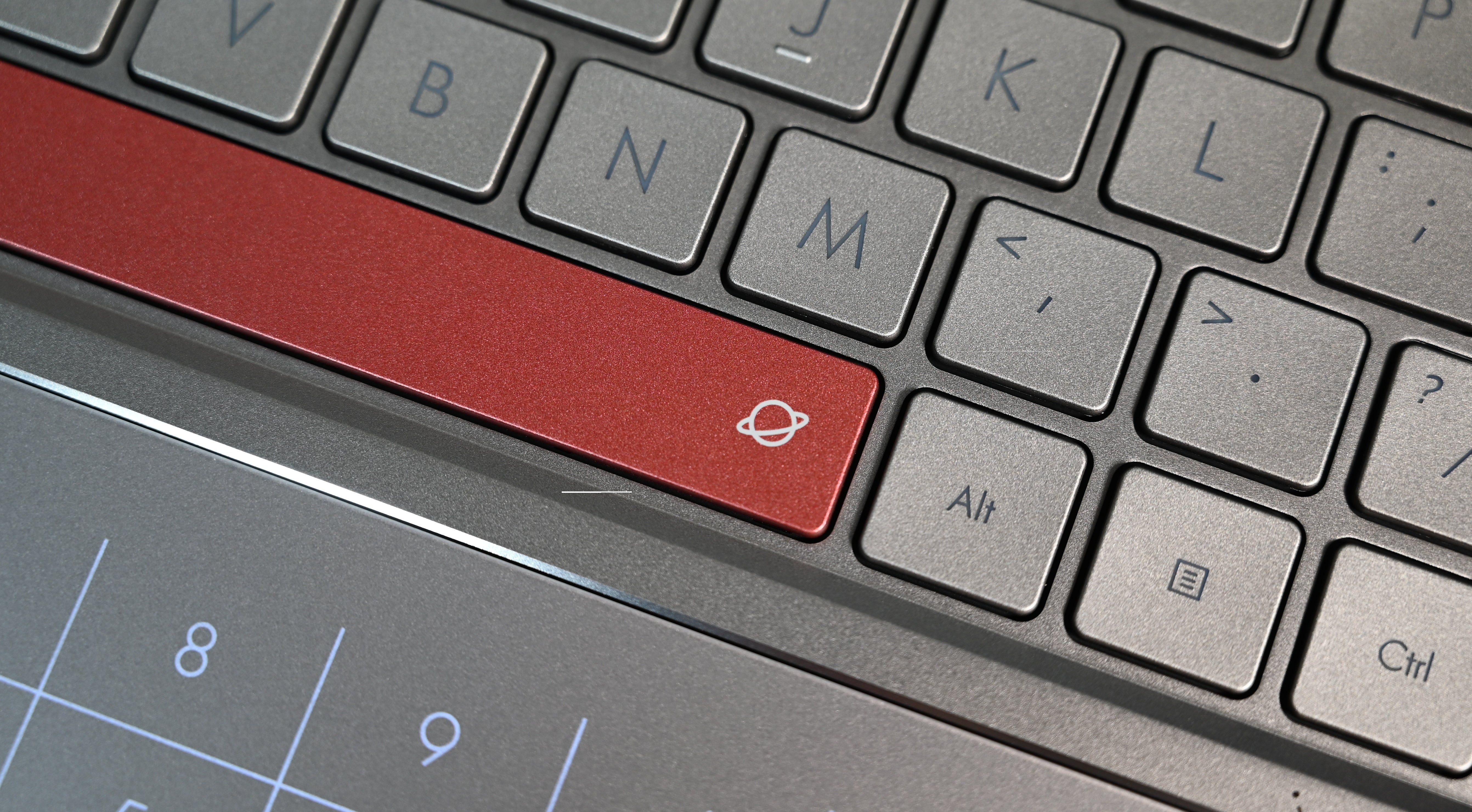
There is nothing special about the typing experience. As per usual on portable laptops, the keys are rather shallow and are lacking that satisfying tactile click you get on larger laptops or external peripherals. On the plus side, the backlit tiles are a decent size and nicely spaced, so my fingers felt right at home from the start. The entire deck is tilted at a 3-degree angle, a shift Asus claims will improve comfort, though I didn’t notice much benefit. Either way, I did well on a standardised typing test, hitting a 96% accuracy at a rate of 118 words per minute.
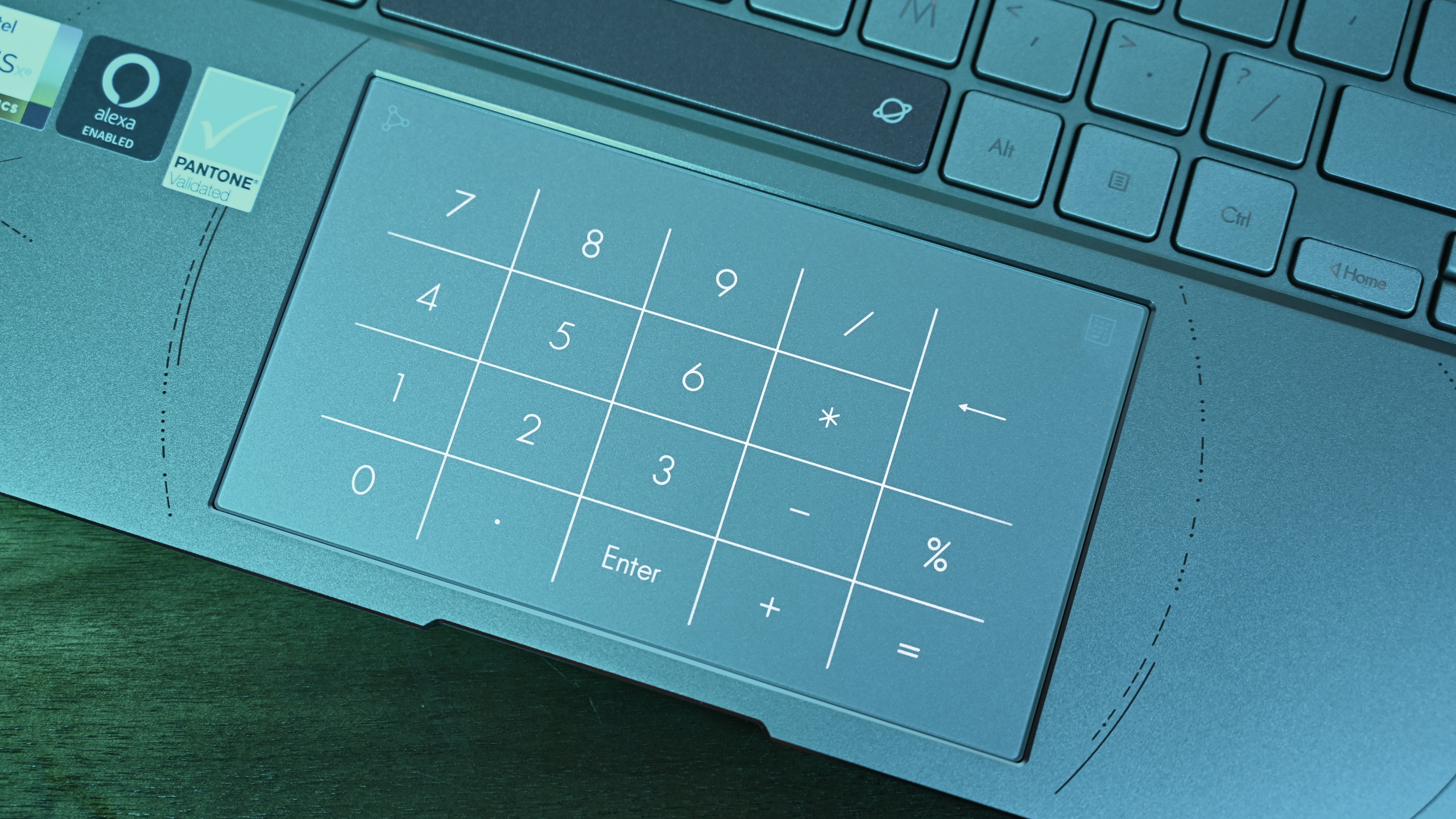
The touchpad is also familiar. It’s a good size, at 5.1 x 2.9 inches, and its smooth glass surface was responsive to my erratic swipes and gestures, including three-finger swipes up to switch between windows. It looks like a normal touchpad until you tap a tiny icon in the top-right corner and enable an LED-illuminated numpad overlaid atop the rectangular surface. The nifty touch sensor reliably registered the numbers I tapped. I just had to remember to turn the numpad off to avoid accidentally punching in numbers when attempting to left-click.
Enter the abyss
What better way to mark Asus’ journey into space than to equip its laptop with a screen that achieves perfect dark levels. Yes, the 14-inch, 2.8K (2800 x 1800-pixel) display is OLED, and it’s just as magical as those LG or Sony TVs you lust for at your local electronics store.

Naturally, I watched Interstellar on Paramount+, and its cinematic brilliance was on full display on the 14X’s OLED panel. Space was an inky dark abyss, illuminated only by distant stars. Conversely, the snowy white planet on which Matt Damon loses his mind was a crisp white. Every colour popped off the panel with splendid hues, and with a peak of 365 nits, the screen gets bright enough for outdoor use. One oddity I’ve noted with all OLED laptop panels is that a pixel lattice is visible on white backgrounds; it was distracting at first, but I eventually learned to see past it.
Asus claims the display covers 100% of the DCI-P3 colour space, is verified for VESA DisplayHDR 500 True Black, and is Pantone validated to have accurate colours out of the box. Also interesting to note is the claim that this OLED screen emits 70% less harmful blue light. While this isn’t a gaming laptop, the screen has a 90Hz refresh rate, a small motion upgrade from the standard 60Hz to go along with its 0.2ms response time.

It’s nice to see Asus answer some of the concerns people rightly have about OLED panels, namely around burn-in. The imprinted “LG” logo on my TV proves this isn’t some conspiracy theory — burn-in is real, however rare. To prevent images from being permanently engrained in the Zenbook’s display, Asus is shipping the laptop with dark mode enabled, and including an auto screen-diming feature after idling for 5 minutes.
Also, a special burn-in-prevention screensaver will turn on when the panel is idle for longer than 30 minutes. If that wasn’t reassurance enough, Samsung’s burn-in refine technology is onboard and the screen comes with a 7,000-hour (at 200 nits) warranty.
Rocket powered
If the Zenbook 14X is a spaceship, its Intel Core i9-12900H CPU is the Saturn V. It’s a powerful rocket of a processor, capable of running demanding tasks without losing thrust, especially when aided with a generous 32GB of LPDDR5 RAM and 1TB PCIe 4.0 payload. I’m frankly baffled by how much power Asus crammed in this small chassis, and it paid off. I ran a few dozen Chrome apps, some of which were streaming music or videos, editing the photos you see in this review on Affinity Photo, and loading Champion’s League highlights. The laptop didn’t budge, shooting through my demanding workloads without overheating.
It backed up its real-world achievements with some impressive benchmark scores, including a Geekbench result of 1,817 for single-core and 11,649 for multi-core. With a full-blown H-series processor and twice as much memory, the Zenbook 14X dismantled the Yoga 9i (Core i7-1260P), which hit a multi-core score of 9,516. The Zenbook just about matched Asus’ Flow Z13 (11,358) gaming tablet and put up one hell of a fight against the MacBook Pro 14 (12,663).

It took the Zenbook 14X OLED 3 minutes and 26 seconds to render a 3D image in Blender, a strong result that outpaced the Yoga 9i by several minutes, and kept up with some of the fastest notebooks around, including the MacBook Pro 14 (3:21), Alienware m15 R5 (3:27), and the Razer Blade 14 (3:48).
Creative pros using the 14X for video editing can expect speedy performance; the Zenbook 14X took only 6 minutes and 48 seconds to convert a 4K video into 1080p using the Handbrake app. It defeated the Yoga 9i (9:02) by a wide margin and just topped the Razer Blade 14 (7:26) in a nail-biter. Gaming laptops like the ROG Zephyrus G14 (3:15) lead the rankings on this particular test.
It would seem appropriate for a space edition laptop to be capable of playing games, but sadly, the Zenbook disappoints in this area. Equipped with integrated Iris Xe graphics, the Zenbook 14X OLED hit 44 frames per second when playing Sid Meier’s Civilisation VI at 1080p on High graphics settings. That’s not a bad result, but Civ isn’t exactly a demanding game.
Running out of thrust
On to battery life, where we witness a devastating crash. The Zenbook 14X OLED had a short flight time of only 5 hours and 19 minutes on our battery test, which involves video playback with the screen set to 200 nits.

This disappointing result misses Asus’ 8-hour estimate (also not great) and places the Zenbook 14X behind most of its rivals, including the Yoga 9i (8:41) and Blade 14 (6:41).
Should you buy the Zenbook 14X OLED Space Edition?
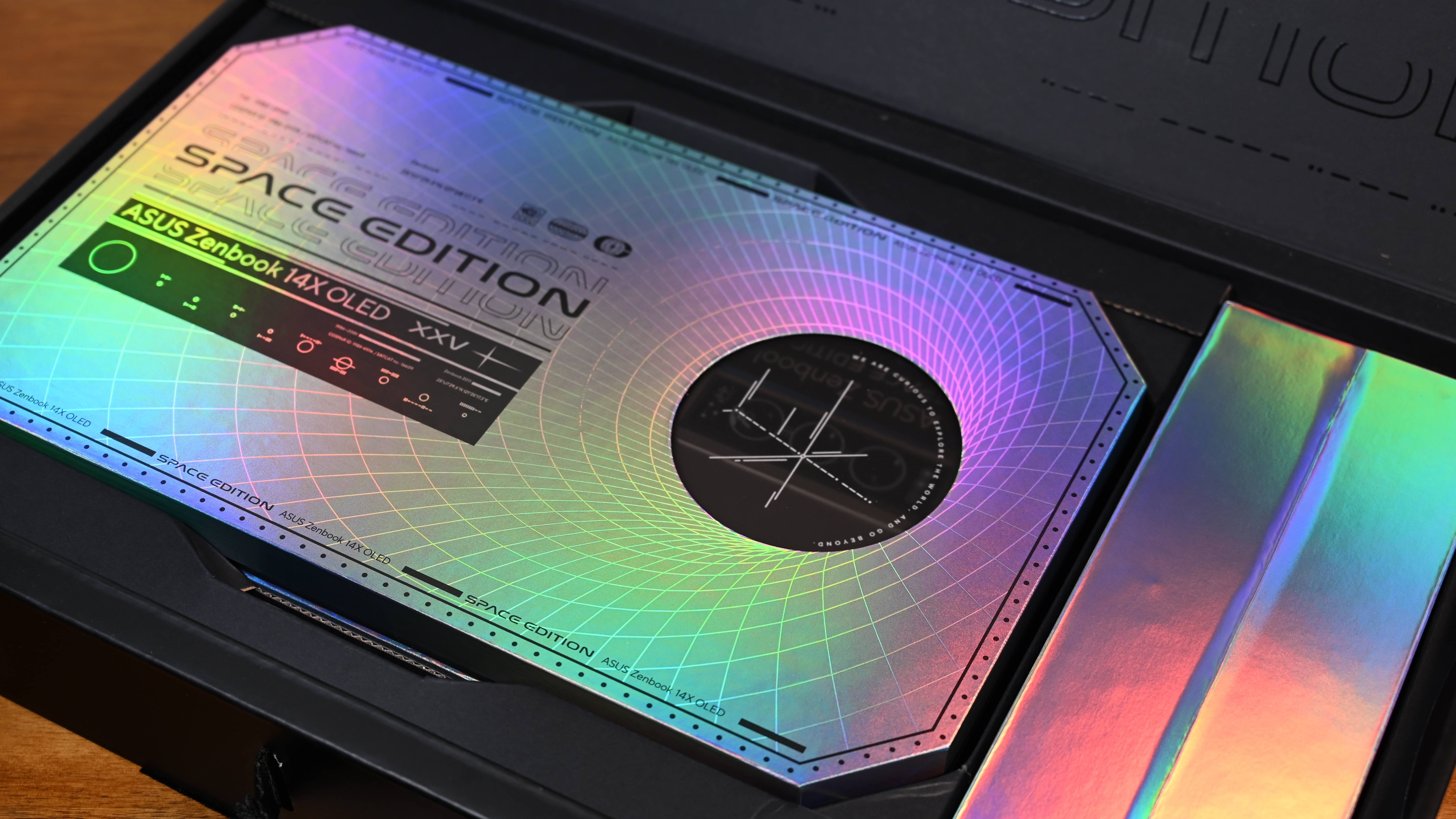
I want to love the Zenbook 14X OLED, a notebook with a charming space-themed chassis and a fun customisable OLED window on the lid. Even if it’s not for you, Asus deserves credit for the care put into this custom design. And it paired that look with some premium components, including a gorgeous OLED display, a powerful Intel processor, and an impressive array of I/O.
Unfortunately, the Zenbook 14X is more Apollo 13 than Apollo 11. Preventing the 14X OLED from reaching the moon is one misfire: poor battery life. At just over five hours, the 14X OLED Space Edition isn’t a laptop you want to take to a cafe without a charger, and despite its name, you definitely wouldn’t want it on your next international flight. I wish I could erase its dismal runtime from my memory, and give this wonderfully overdesigned notebook a strong recommendation, but I can’t.
While they might not be quite as powerful, other portable laptops on the market, like the Yoga 9i or Razer Blade 14, last several hours longer on a charge, making them a smarter choice for most people. But not everyone shops with their brains, and if you let your heart call the shots, then take a trip with the Zenbook 14X OLED Space Edition — just be sure to pack a charger.
